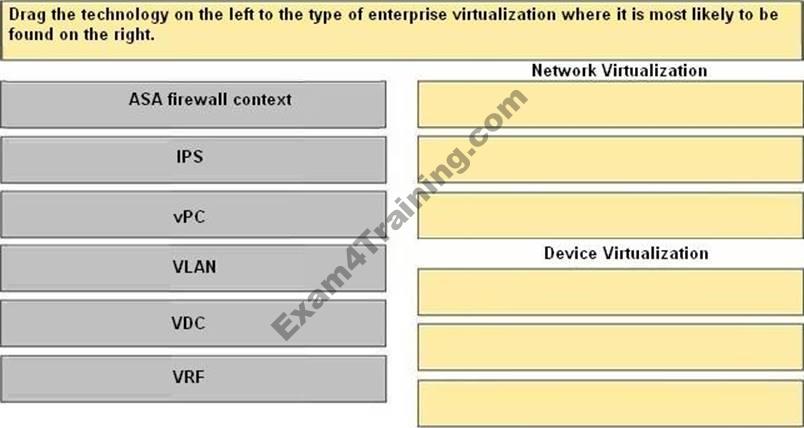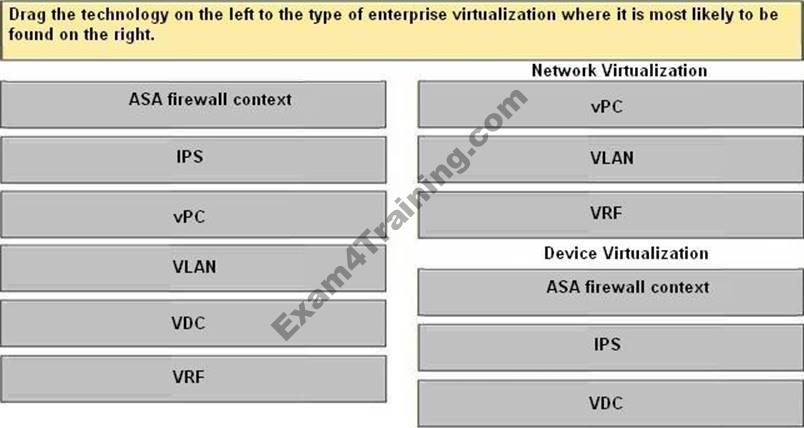Drag the technology on the left to the type of enterprise virtualization where it is most likely to be found on the right
DRAG DROP
Drag the technology on the left to the type of enterprise virtualization where it is most likely to be found on the right.

Answer: 
Explanation:
Here is the correct answer
Network Virtualization
* VPC
* VLAN
* VRF
Device Virtualization
* ASA firewall context
* IPS
* VDC
Explanation:
Network virtualization encompasses logical isolated network segments that share the same physical infrastructure. Each segment operates independently and is logically separate from the other segments. Each network segment appears with its own privacy, security, independent set of policies, QoS levels, and independent routing paths.
Here are some examples of network virtualization technologies:
– VLAN: Virtual local-area network
– VSAN: Virtual storage-area network
– VRF. Virtual routing and forwarding
– VPN: Virtual private network
– vPC. Virtual Port Channel
Device virtualization allows for a single physical device to act like multiple copies of itself. Device virtualization enables many logical devices to run independently of each other on the same physical piece of hardware. The software creates virtual hardware that can function just like the physical network device. Another form of device virtualization entails using multiple physical devices to act as one logical unit.
Here are some examples of device virtualization technologies:
– Server virtualization: Virtual machines (VM)
– Cisco Application Control Engine (ACE) context
– Virtual Switching System (VSS)
– Cisco Adaptive Security Appliance (ASA) firewall context
– Virtual device contexts (VDC)
Cisco Press CCDA 640-864 Official Certification Guide Fourth Edition, Chapter 4
Latest 200-310 Dumps Valid Version with 644 Q&As
Latest And Valid Q&A | Instant Download | Once Fail, Full Refund

